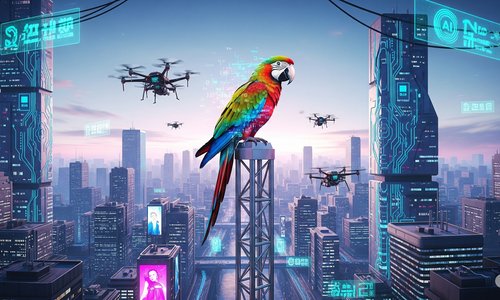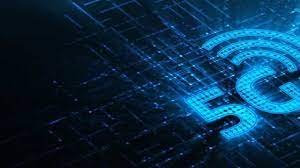
A Promessa e o Perigo da Nova Revolução Digital
A nova corrida tecnológica global levanta uma pergunta urgente: estamos prontos para confiar na inteligência que criamos?

O 5G chegou! O que esperar dele?
A nova geração de comunicação móvel promete muitas funcionalidades, mas a real utilização dependerá de um conjunto de ações coordenadas para criar ferramentas que usem todo o seu potencial
Em novembro de 2021 a Anatel concluiu o maior leilão de frequências já realizado no Brasil, oferecendo ao mercado diversas faixas, algumas delas já leiloadas no passado, mas sem arrematantes, como os casos da faixa de 700MHz e 2.3GHz, e outras inéditas, como a faixa de 3.5GHz e 26GHz, destinadas à ativação do 5G no Brasil.
Não é de hoje que o 5G está nas manchetes, porém mais recentemente tem sido pauta quase que diária em todas as mídias, resultado do início de sua ativação no Brasil. Até a presente data já está em operação nas cidades de Brasília, Belo Horizonte, João Pessoa e Porto Alegre, e certamente outras cidades estarão na lista até a publicação desta edição, inclusive São Paulo, a maior cidade brasileira.
Mas o que é o 5G e quais são as melhorias que proporcionará para sociedade?
Uma das perguntas que mais recebo e para surpresa de todos costumo dizer que, a princípio, não sentiremos muita diferença! O espanto deve-se ao fato de sempre ouvirmos que o 5G permitirá fazer tudo, será a solução para todos os problemas e repetem-se os exemplos mais populares de sua aplicação: cirurgias realizadas remotamente e carros autônomos. É quando começo a explicar que, para isso acontecer, será necessário muito trabalho, colaboração e envolvimento de muitas iniciativas da academia, indústria, sociedade e governo. Para entender este processo evolutivo, vamos começar do começo.
O que difere o 5G das redes de gerações anteriores?
O 5G é composto por 3 pilares fundamentais, a partir dos quais são criados seus diferenciais: banda larga avançada (eMBB, enhanced Mobile BroadBand), que permitirá conexões a altas taxas, muitas vezes passando de 1Gbps de download; alta densidade de conexões (mMTC, massive Machine Type Communication), que, além de melhorar eficiência energética, permite milhões de conexões por km2 e levará a Internet das Coisas para outro patamar; e controle de missão crítica (URLLC, Ultra Reliable Low Latency Communication), que garante alta confiabilidade e baixíssima latência na comunicação.
Figura 1 – Pilares do 5G
A união destes 3 pilares é que faz do 5G algo tão diferente, comparado com as gerações de comunicações móveis anteriores ou mesmo outras tecnologias, como o WiFi. Outro ponto tão importante quanto os 3 pilares é a capacidade, nas versões mais recentes do padrão 5G, de fatiar a rede e configurar diferentemente cada uma dessas fatias.
Justamente por ter diferenças tão significativas em relação às gerações anteriores é que o 5G não trará tantas diferenças para o nosso dia a dia, ou pelo menos não imediatamente ou diretamente. Uma transmissão de 1Gbps não fará diferença na hora de assistir a um conteúdo “streaming”, de se locomover, de solicitar o delivery de um produto, tudo bem, permitirá fazer o download de um conteúdo 10 vezes mais rápido que no 4G, mas na prática, isso realmente fará diferença na nossa vida cotidiana? Não acredito.
Quais são as possibilidades com a conexão 5G?
Cidades Inteligentes
Pela característica de transmitir altas taxas de dados, com alta densidade de conexão e baixa latência, se ampliarmos o uso de sensores conectados em uma cidade, por exemplo, poderíamos gerenciar diversos indicadores em tempo real, e melhorar segurança, mobilidade, por exemplo, além de prever cenários, antecipar ações, reduzir riscos e impactos negativos, aí sim estamos falando de inovação e ruptura. Só que isso, hoje, ainda não existe, e precisa ser desenvolvido e integrado.
Casas Inteligentes
A próxima geração de tecnologia de comunicações móveis 5G trará serviços inovadores para consumidores e empresas, baseada em suas características de conectividade ultrarrápida e mais confiável, capacidade de conexão de grande número de dispositivos e tempos de respostas mínimos. É considerado também um dos mais importantes motores de inovação e crescimento econômico nas próximas décadas, responsável pela criação de milhares de novos empregos. Por isso devemos enxergar o 5G também como uma plataforma de inovação, que trará novos serviços e o conceito de experiência imersiva, combinando tecnologias como Computação de Borda, Big Data, Inteligência Artificial, Internet das Coisas (IoT), dentre muitas outras, e as novas aplicações que serão desenvolvidas terão enorme potencial de agregar valor à sociedade, contribuindo para a redução de custos, para ganhos de eficiência e produtividade e para uma melhor experiência.
Qual seria o impacto financeiro do 5G?
Um estudo interno conduzido pela Deloitte estimou o impacto financeiro que o uso de soluções 5G trará para a economia brasileira, gerado a partir do aumento de produtividade das operações e reduções de custo propiciados pela adoção de soluções 5G, e o resultado é um potencial de benefício de aproximadamente R$ 590 bilhões até o ano de 2031. Esse mesmo estudo da Deloitte estimou a demanda estimada de software para redes desagregadas abertas de telecomunicações e para soluções baseadas em 5G, e chegou à conclusão de que serão mais de R$100 bilhões em software para o 5G na próxima década.
A título de curiosidade, uma recente pesquisa realizada em parceria entre o site de notícias Mobile Time e a empresa de soluções em pesquisas Opinion Box, em abril deste ano entrevistou 2.041 brasileiros com 16 anos ou mais que acessam a Internet e possuem smartphone, foi identificado que o brasileiro não paga por aplicativos, mas aceita propaganda, e esse detalhe vale muito para o mercado publicitário, pois o smartphone permite acesso direto ao consumidor e consegue-se avaliar seu comportamento. Diferentemente da mídia convencional, TV, rádio e mídia impressa, a publicidade no smartphone, feita de forma individualizada, consegue medir quanto tempo aquele consumidor teve acesso à propaganda, quando foi, por quantas vezes, se interagiu com ela, e outra infinidade de dados que podem direcionar melhor a publicidade, levando aos consumidores um conteúdo que lhes sejam mais interessantes, além de muito mais assertivo para o anunciante. E podemos imaginar os benefícios que a Inteligência Artificial pode trazer ao analisar o perfil e indicar a publicidade mais aderente àquele consumidor.
E isso é importante? É muito importante!
O Brasil tem atualmente mais de um smartphone por habitante, segundo levantamento anual divulgado pela FGV. São 242 milhões de celulares inteligentes em uso no país, que tem pouco mais de 214 milhões de habitantes [IBGE]. Também são os mais vendidos, são 3 celulares por televisão, ainda de acordo com a pesquisa da FGV. E com a chegada do 5G, trazendo alta velocidade de conexão, pode-se começar a pensar em propagandas mais imersivas, conteúdos com qualidade 4K/8K, realidade aumentada, realidade virtual, daqui a pouco até mesmo poderemos interagir com publicidade holográfica.
Outro dado muito interessante na pesquisa da Mobile Time é que 66% dos brasileiros com smartphone assinam algum streaming de vídeo, dando um salto de 10 pontos em um ano. O smartphone também se tornou uma sala de aula, seja como ferramenta de pesquisa para estudantes e professores, seja ele próprio como interface para aulas remotas. Pela primeira vez, o relatório incluiu a seguinte pergunta: Você já fez algum curso (de modalidade remota) em que o conteúdo das aulas e os testes eram todos via app? 47% dos entrevistados responderam “sim”. E em um país com grandes deficiências na educação esta é, sem dúvida, uma excelente notícia.
Mas o que tudo isso tem a ver com o 5G? Tudo a ver! A alta velocidade de conexão do 5G permitirá o acesso a conteúdo, seja de entretenimento, educacional ou de notícias, muito mais rico e imersivo, melhorando a experiência do consumidor, engajando melhor, aumentando a audiência e o consumo de mídia audiovisual.
O cenário é super promissor, muita coisa nova para acontecer em curto período, mas fica a dúvida, quando teremos acesso às redes 5G?
Figura 2 – Cronograma de ativação do 5G, conforme Edital
O cronograma da Anatel determina que até 2029 todas as cidades brasileiras terão acesso ao 5G (figura 2), mas considerando que temos, além das operadoras tradicionais Claro, TIM e VIVO, novos entrantes como a Unifique, Ligga Telecom, Brisanet, Sercomtel e Cloud2U, que vêm com modelos de negócios diferentes do usual para suas regiões de atuação, acredito que o ritmo de ativação será muito maior e faremos uso irrestrito do 5G muito antes que esperamos. Mas é assunto para o próximo artigo.
Referências:
Relatório do Ecossistema 5G Brasil – Produto 3 – Demanda por soluções digitais baseada em 5G - novembro de 2021 - Deloitte
Panorama Mobile Time/Opinion Box - Uso de Apps no Brasil - junho de 2022
Pesquisa Panorama Mobile Time/Opinion Box - O brasileiro e seu smartphone - julho de 2022
CIO da Intellinet Conectividade Inteligente, uma consultoria com foco em tecnologias emergentes, principalmente redes de nova geração (como 5G), inteligência artificial e cibersegurança. A tese que defendo é que as redes de nova geração aceleram a coleta de dados (sensorização) e a sua transmissão, a inteligência artificial transforma esse enorme conjunto de dados em informação relevante à tomada de decisão e, quando temos informação relevante [e estratégica], é mandatório protegê-la, daí o pilar de cibersegurança.
Além das atividades da Intellinet, coordeno na ACATE o Núcleo de Tecnologias Emergentes (antigo Grupo de Trabalho do 5G); coordeno o Comitê de AIoT e Robótica na Associação Internacional para Inteligência Artificial, onde acumulo o cargo de conselheiro. Também atuo como conselheiro na Organização Latino Americana de Cooperação para Cidades Inteligentes.
Sou investidor-anjo na Poli Angels, mentor em algumas startups e tenho duas iniciativas próprias, aplicando Web3 no turismo, a NFTravel, e outra para o uso de IA no marketing de pequenos negócios.
Também sou Brand Ambassador da StartSe, reconhecida internacionalmente por sua plataforma educacional que capacita indivíduos e organizações em todo o mundo a aprender, conectar e inovar, e que está presente nos principais centros de inovação mundiais, incluindo os Estados Unidos (Vale do Silício, Miami e Nova Iorque), China, Israel, Brasil e Portugal.
Também sou palestrante em eventos, seminários, workshops, falando principalmente sobre o mundo digital, inovação, tecnologias ruptivas, pessoas, Web3, Blockchain, mídia e entretenimento, Inteligência Artificial, 5G/6G, IoT, Cidades Inteligentes, Indústria 4.0, Agro 4.0 e Economia Azul.

A nova corrida tecnológica global levanta uma pergunta urgente: estamos prontos para confiar na inteligência que criamos?

Por que dominar a IA será a nova alfabetização do século XXI

Conselhos de Administração devem evoluir da supervisão reativa para a antecipação estratégica, frente à crescente complexidade e volatilidade dos ambientes de negócios.

De 14 a 25 de julho, reserve suas manhãs das 08h00 às 09h30 para participar da tradicional Maratona I2AI! Uma jornada intensa com debates e palestras sobre temas essenciais: Ética,